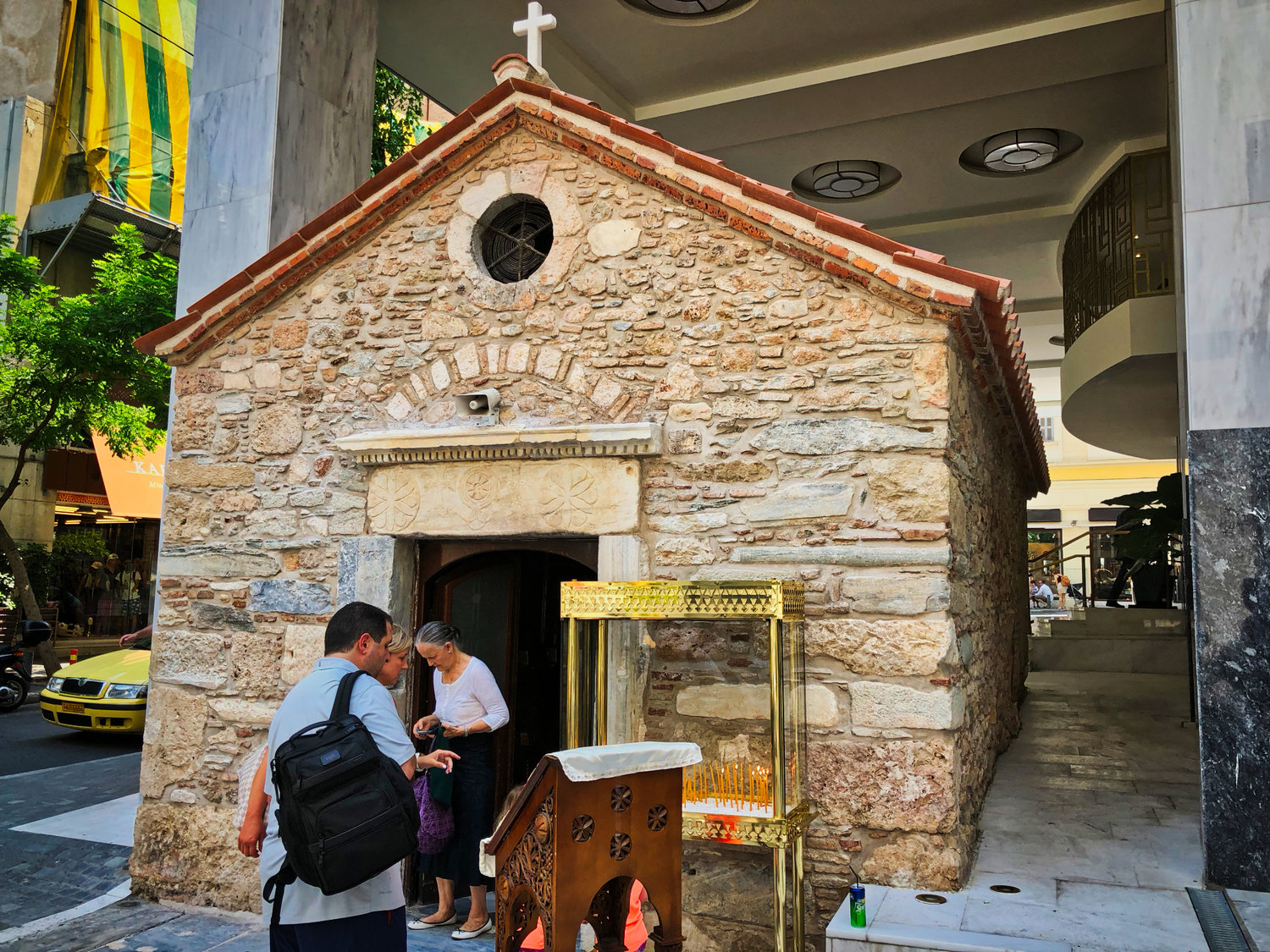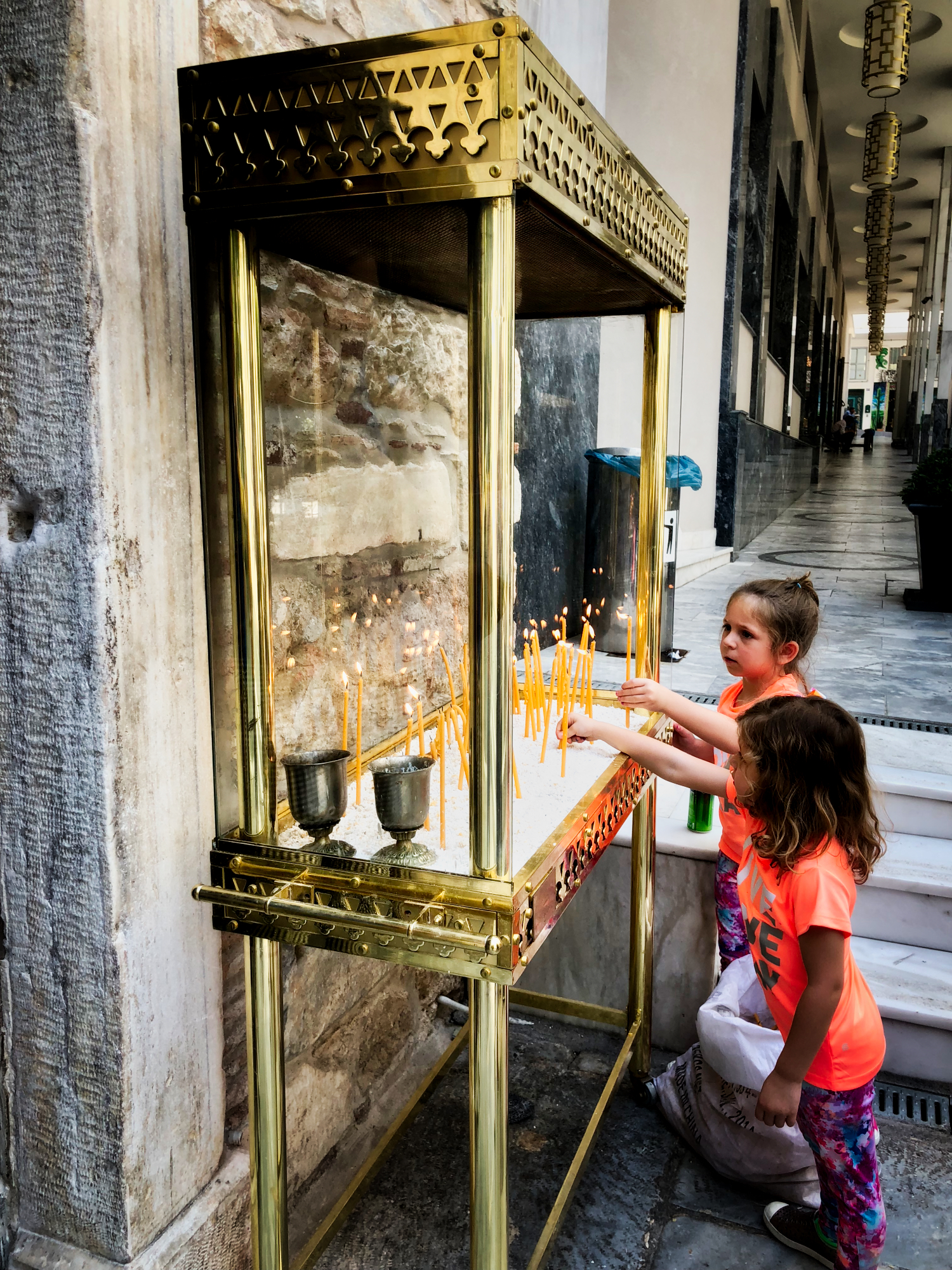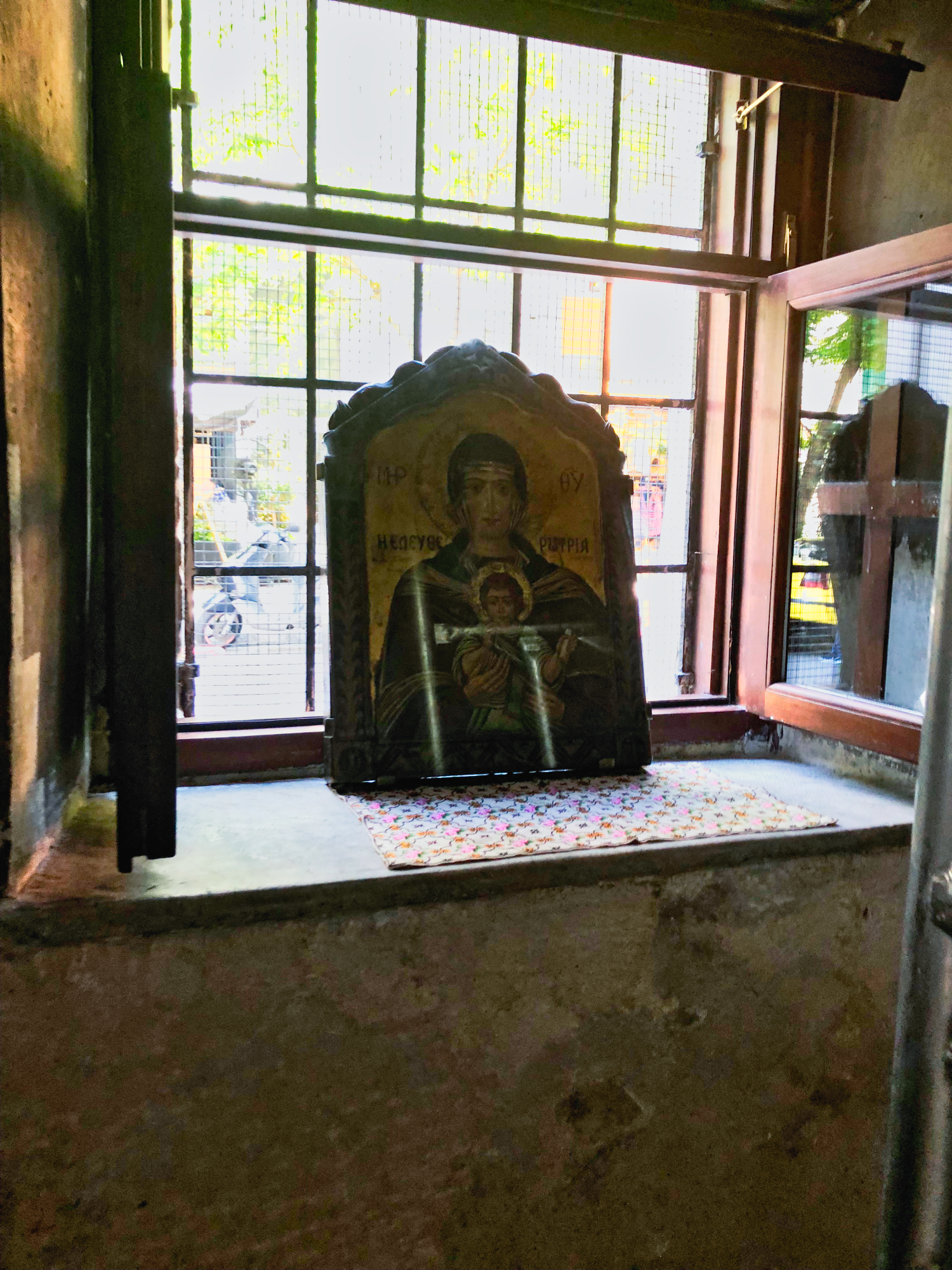The Greek Orthodox church refused to relocate Agia Dynami, the church of “Holy Power,” during the city’s urban expansion.
Lenten Campaign 2025
This content is free of charge, as are all our articles.
Support us with a donation that is tax-deductible and enable us to continue to reach millions of readers.
In the 1950s the city of Athens was undergoing a period of fast urban growth and the municipal government started to expand its infrastructure to meet the needs of a booming population. Part of it involved the creation of new ministerial buildings in Athens’ city center. The perfect location for the new headquarters of the Ministry of Education and Religion was found on a patch of land located right behind the famous Syntagma Square, populated by a few stores and a tiny Byzantine church that could have easily been relocated.

But the Greek Orthodox Church refused to give the property up. Next, something unusual happened. Instead of finding an alternative location for the ministerial building, the Greek government decided to go ahead and built it, wrapping the church within the walls of the new building.

Since then, Agia Dynami, built in the 16th century in honor of the Virgin Mary, has been standing as an architectural symbol of the resilience of traditions in the face of modernity.

But its unusual location, squeezed between the supporting pillars of the ministerial building, which was recently converted into a hotel, is not the only interesting feature of this church. Agia Dynami—literally “Holy Power”—-also hosts an underground tunnel that reaches a large cave system, which according to some is directly connected to the Acropolis. And an inscription found at its entrance says that this tiny barrel-vaulted church was built on top of a pre-existing pagan temple dedicated to Herakles, who for the Greeks was a heroic demigod of remarkable strength—perhaps not a coincidence after all.








